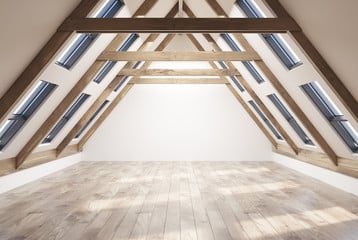Renovating listed buildings is a delicate process that requires careful attention to detail and the specific requirements of each project. This article highlights the main precautions to take when renovating this type of building in order to ensure a result that respects the historic heritage while being adapted to modern needs.
Comply with Legal and Regulatory Obligations
Firstly, it is essential to know and respect the legal and regulatory obligations relating to the protection of listed buildings. These include consult the local urban plan (PLU) or the municipal card which sets the rules applicable to protected buildings in your municipality as well as the heritage code. Certain works may be subject to prior authorization from the Architectes des Bâtiments de France (ABF) or the territorial architecture and heritage service (STAP). Also think about the limits of private property rights: the classification is not systematically mentioned in the land register, but can today be consulted thanks to the Permanently Constructible Localized Plan (PLP).
Building Permit Application
To be authorized to carry out renovation work on a listed building, owners must obtain a building permit. This request must be submitted to the town hall and include all the documents necessary for validation of the project, such as a master plan or a heritage impact study. The procedures can be long and complex, so it is recommended to contact the relevant services to find out the precise requirements.
Respect the Architectural Rules
Listed buildings are subject to specific architectural rules aimed at preserving their historic character while guaranteeing their modern comfort. Therefore, it is crucial to call on professionals specialized in the renovation of old buildings to respect original techniques and materials as well as aesthetic codes specific to each building.
Take into account the costs and possible financing
The renovation of listed buildings can be costly due to the complexity of the work, sometimes rare materials and the constraints linked to heritage protection. It is important to establish a realistic budget and find out about the financial aid available for this type of project. Among these, we include:
- The energy transition tax credit (CITE)
- Subsidies from the National Agency for Housing Rehabilitation (ANAH)
- Aid from local or regional authorities
- Regional heritage funds for private historic monuments
It is recommended to consult a guide specializing in financing the renovation of listed buildings to find out all the possibilities and optimize your budget.
Favor an Eco-responsible Approach
In the current context of energy transition and the fight against climate change, it is essential to adopt an eco-responsible approach when renovating listed buildings. This involves in particular select sustainable and environmentally friendly materials, as well as ensuring the energy performance of the building once the work is completed. This approach not only preserves the architectural heritage while limiting the ecological impact in the long term.
Implement Thermal Insulation Techniques
Thermal insulation is a key aspect of the energy renovation of listed buildings, because it reduces heating needs and limits energy losses. Owners should inform themselves about the insulation techniques adapted to architectural constraints and comply with current standards, such as the 2012 thermal regulations (RT) or the Low Consumption Building (BBC) label.
Call on specialized professionals
Finally, it is essential to entrust your listed building renovation project to professionals specialized in this field. They will be able to advise you on the best solutions to reconcile respect for heritage and modern comfort, while guaranteeing a result that complies with legal and regulatory requirements.
Choosing the Right Project Owner
The choice of the project owner is an essential element for the success of your project. He must be able to understand and apply the specific constraints linked to the classification of the building as well as those relating to security and current technical developments in the sector. Do not neglect this step, it will be decisive for the success of your renovation.
Working with a Building Architect from France
To carry out the renovation of a listed building, it is often necessary to collaborate with an architect from Bâtiments de France (ABF) or another professional with recognized expertise in heritage restoration. These experts are able to propose solutions adapted to the specific problems of protected buildings, while respecting the rules of town planning and heritage conservation.







